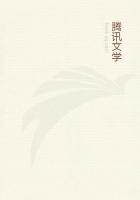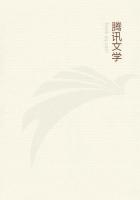Before dismissing the Osmiae, let us devote a moment to their cocoons, a comparison of which, in the matter of bulk, will furnish us with fairly accurate evidence as to the relative size of the two ***es, for the thing contained, the perfect insect, is evidently proportionate to the silken wrapper in which it is enclosed. These cocoons are oval-shaped and may be regarded as ellipsoids formed by a revolution around the major axis. The volume of one of these solids is expressed in the following formula:
4 / 3 x pi x a x (b squared), in which 2a is the major axis and 2b the minor axis.
Now, the average dimensions of the cocoons of the Three-horned Osmia are as follows:
2a = 13 mm. (.507 inch.--Translator's Note.), 2b = 7 mm. (.273 inch.--Translator's Note.) in the females;
2a = 9 mm. (.351 inch.--Translator's Note.), 2b = 5 mm. (.195 inch.--Translator's Note.) in the males.
The ratio therefore between 13 x 7 x 7 = 637 and 9 x 5 x 5 = 225 will be more or less the ratio between the sizes of the two ***es. This ratio is somewhere between 2 to 1 and 3 to 1. The females therefore are two or three times larger than the males, a proportion already suggested by a comparison of the mass of provisions, estimated simply by the eye.
The Horned Osmia gives us the following average dimensions:
2a = 15 mm. (.585 inch.--Translator's Note.), 2b = 9 mm. (.351 inch.--Translator's Note.) in the females;
2a = 12 mm. (.468 inch.--Translator's Note.), 2b = 7 mm. (.273 inch.--Translator's Note.) in the males.
Once again, the ratio between 15 x 9 x 9 = 1215 and 12 x 7 x 7 = 588lies between 2 to 1 and 3 to 1.
Besides the Bees who arrange their laying in a row, I have consulted others whose cells are grouped in a way that makes it possible to ascertain the relative order of the two ***es, though not quite so precisely. One of these is the Mason-bee of the Walls. I need not describe again her dome-shaped nest, built on a pebble, which is now so well-known to us. (Cf. "The Mason-bees": chapter 1.--Translator's Note.)Each mother chooses her stone and works on it in solitude. She is an ungracious landowner and guards her site jealously, driving away any Mason who even looks as though she might alight on it. The inhabitants of the same nest are therefore always brothers and sisters; they are the family of one mother.
Moreover, if the stone presents a large enough surface--a condition easily fulfilled--the Mason-bee has no reason to leave the support on which she began her laying and go in search of another whereon to deposit the rest of her eggs. She is too thrifty of her time and of her mortar to involve herself in such expenditure except for grave reasons. Consequently, each nest, at least when it is new, when the Bee herself has laid the first foundations, contains the entire laying. It is a different thing when an old nest is restored and made into a place for depositing the eggs. I shall come back later to such houses.
A newly-built nest then, with rare exceptions, contains the entire laying of one female. Count the cells and we shall have the total list of the family. Their maximum number fluctuates round about fifteen. The most luxuriant series will occasionally reach as many as eighteen, though these are very scarce.
When the surface of the stone is regular all around the site of the first cell, when the mason can add to her building with the same facility in every direction, it is obvious that the groups of cells, when finished, will have the oldest in the central portion and the more recent in the surrounding portion. Because of this juxtaposition of the cells, which serve partly as a wall to those which come next, it is possible to form some estimate of the chronological order of the cells in the Chalicodoma's nest and thus to discover the sequence of the two ***es.
In winter, by which time the Bee has long been in the perfect state, I collect Chalicodoma-nests, removing them bodily from their support with a few smart sideward taps of the hammer on the pebbles. At the base of the mortar dome the cells are wide agape and display their contents. I take the cocoon from its box, open it and take note of the *** of the insect enclosed.
I should probably be accused of exaggeration if I mentioned the total number of the nests which I have gathered and the cells which I have inspected by this method during the last six or seven years. I will content myself with saying that the harvest of a single morning sometimes consisted of as many as sixty nests of the Mason-bee. I had to have help in carrying home my spoils, even though the nests were removed from their stones on the spot.
>From the enormous number of nests which I have examined, I am able to state that, when the cluster is regular, the female cells occupy the centre and the male cells the edges. Where the irregularity of the pebble has prevented an even distribution around the initial point, the same rule has been observed. A male cell is never surrounded on every side by female cells: either it occupies the edges of the nest, or else it adjoins, at least on some sides, other male cells, of which the last form part of the exterior of the cluster. As the surrounding cells are obviously of a later date than the inner cells, it follows that the Mason-bee acts like the Osmiae: she begins her laying with females and ends it with males, each of the ***es forming a series of its own, independent of the other.















